The mango tree (Mangifera indica) is one of the most treasured and widely cultivated fruit trees in tropical and subtropical regions. Known for its luscious, aromatic fruits and long lifespan, a healthy mango tree can become a beloved fixture in gardens, orchards, and farms for generations. While these trees are relatively hardy once established, one of the key aspects of mango tree care — especially during its early years — is proper watering.
So, how often should you water a mango tree?
This is one of the most commonly asked questions by home gardeners and orchard growers alike. In this comprehensive article, we’ll explore everything you need to know about watering a mango tree — from how frequently to water young and mature trees, to factors influencing water needs, seasonal care, and best watering practices to keep your mango tree flourishing.
Understanding the Mango Tree’s Natural Habitat
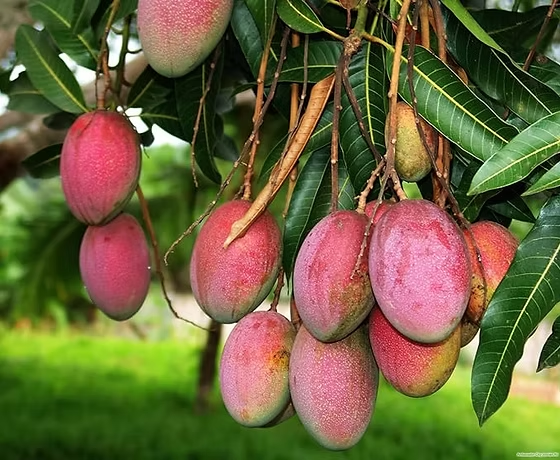
To care for a mango tree effectively, it helps to understand where it naturally thrives:
- Native habitat: South Asia (particularly India, Myanmar, and Bangladesh)
- Typical environment: Warm, humid, tropical and subtropical climates with dry winters and rainy monsoons
- Growth pattern: Evergreen tree that can live over 100 years and grow up to 100 feet tall in ideal conditions
These environmental preferences tell us that while mango trees tolerate drought well once established, they grow best with deep, occasional watering that mimics tropical rain patterns.
How Often Should You Water a Mango Tree?
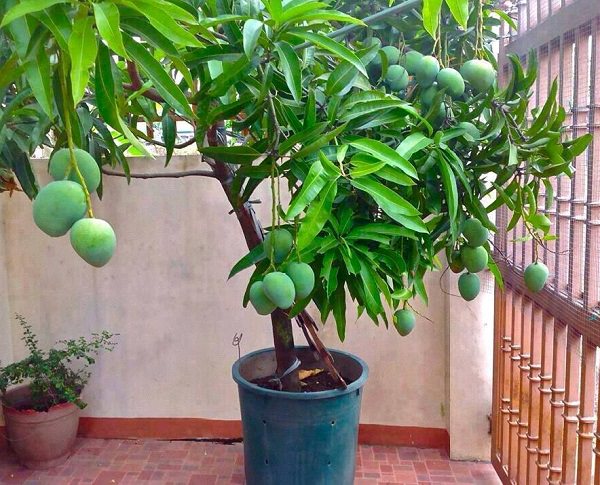
General Watering Guidelines
- Newly Planted Mango Tree (First Year):
Water every 2–3 days for the first two weeks after planting.
Afterward, water once or twice a week for the next 6 months, ensuring deep soaking of the root zone. - Young Mango Tree (1–3 Years Old):
Water every 5–7 days during the growing season (spring and summer), and reduce to every 10–14 days in winter. - Established Mango Tree (3+ Years):
Water every 10–14 days during dry or hot periods.
Reduce watering during the monsoon/rainy season or if natural rainfall is sufficient.
Key Rule:
Deep watering is preferred over frequent shallow watering. Always allow the topsoil to dry out slightly between waterings.
Factors That Influence Mango Tree Watering Frequency
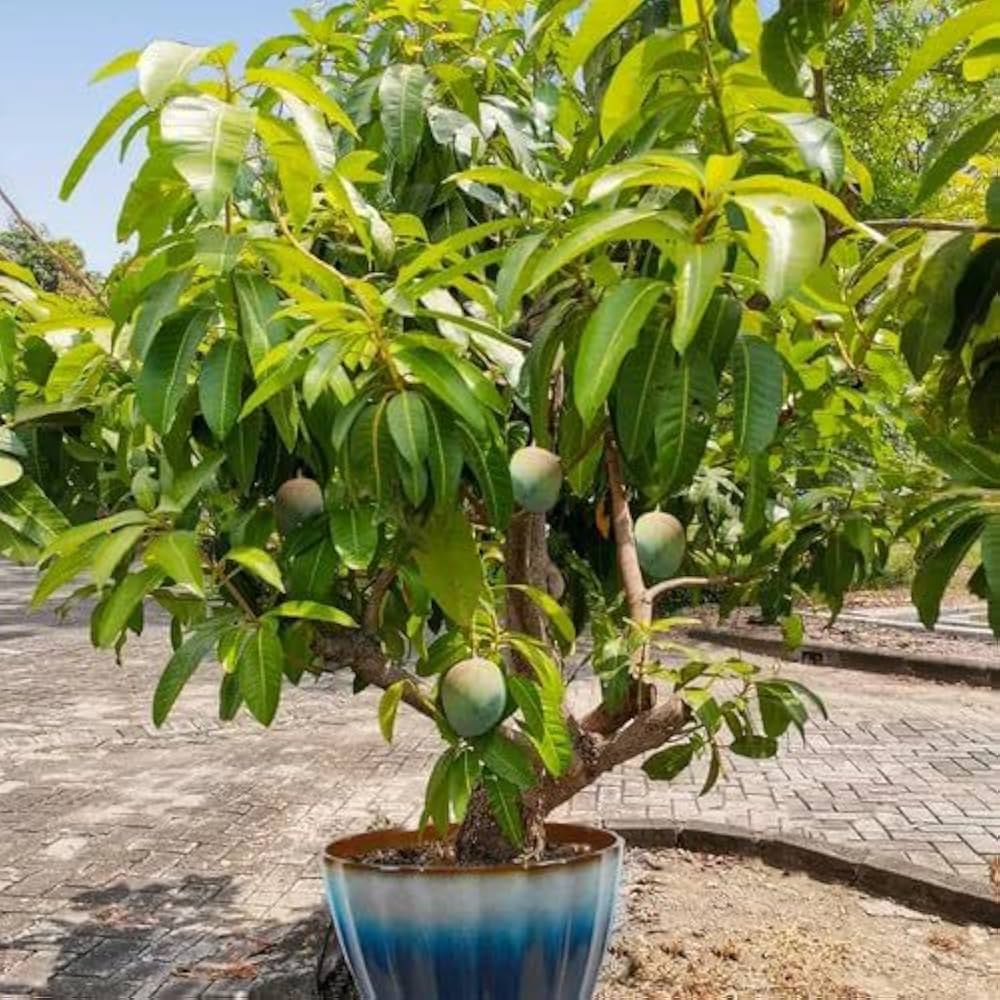
Multiple factors can influence how often your mango tree needs water:
Climate and Season
- Hot, dry climates increase evaporation, requiring more frequent watering.
- Rainy or humid conditions reduce water needs.
- Winter (Dormant season): Trees need minimal watering.
Soil Type and Drainage
- Sandy or loamy soil drains quickly and needs more frequent watering.
- Clay soil holds moisture longer but requires care to avoid waterlogging.
Ideal soil for mango trees is loose, well-draining, and rich in organic matter.
Age of the Tree
- Young trees require more consistent moisture for root establishment.
- Mature trees are drought-tolerant and need less frequent watering.
Tree Size and Root Spread
- Larger trees with expansive root systems absorb water from deeper soil layers.
- Small, potted, or young trees have limited access to moisture and dry out faster.
How to Know When Your Mango Tree Needs Water
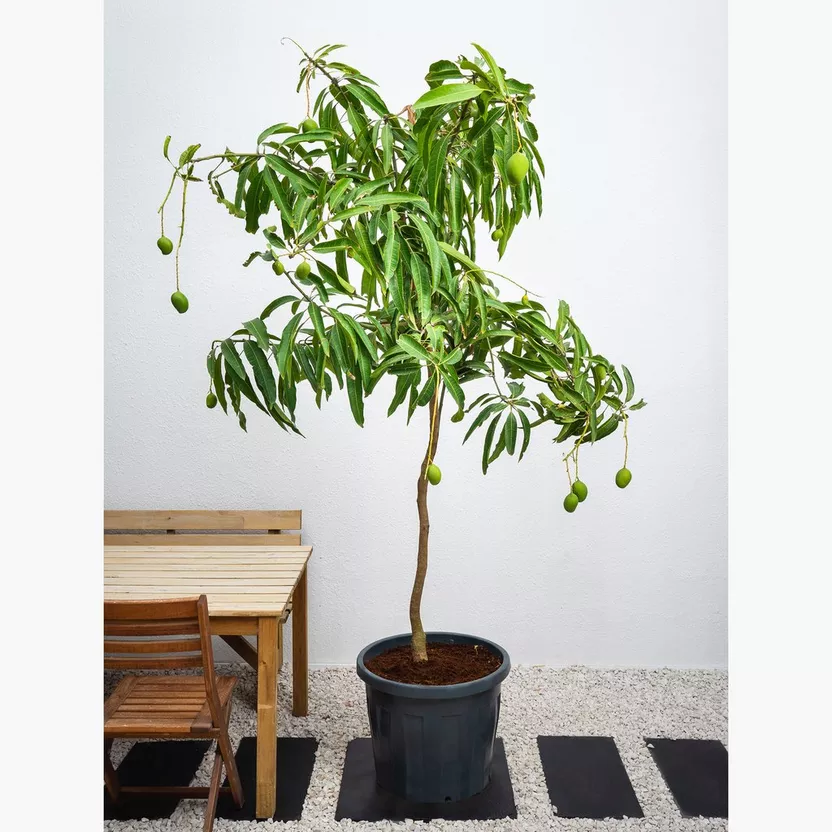
Soil Test
Insert a finger or soil moisture meter about 4–6 inches deep:
- Dry soil: Time to water.
- Moist soil: Wait a few more days.
Leaf and Canopy Signals
- Wilting or drooping leaves often indicate water stress.
- Yellowing or browning leaf edges can be a sign of both overwatering and underwatering — check soil moisture to confirm.
Fruit Development
During flowering and fruiting seasons, water stress can cause fruit drop and poor yields. Keep soil evenly moist during this critical time.
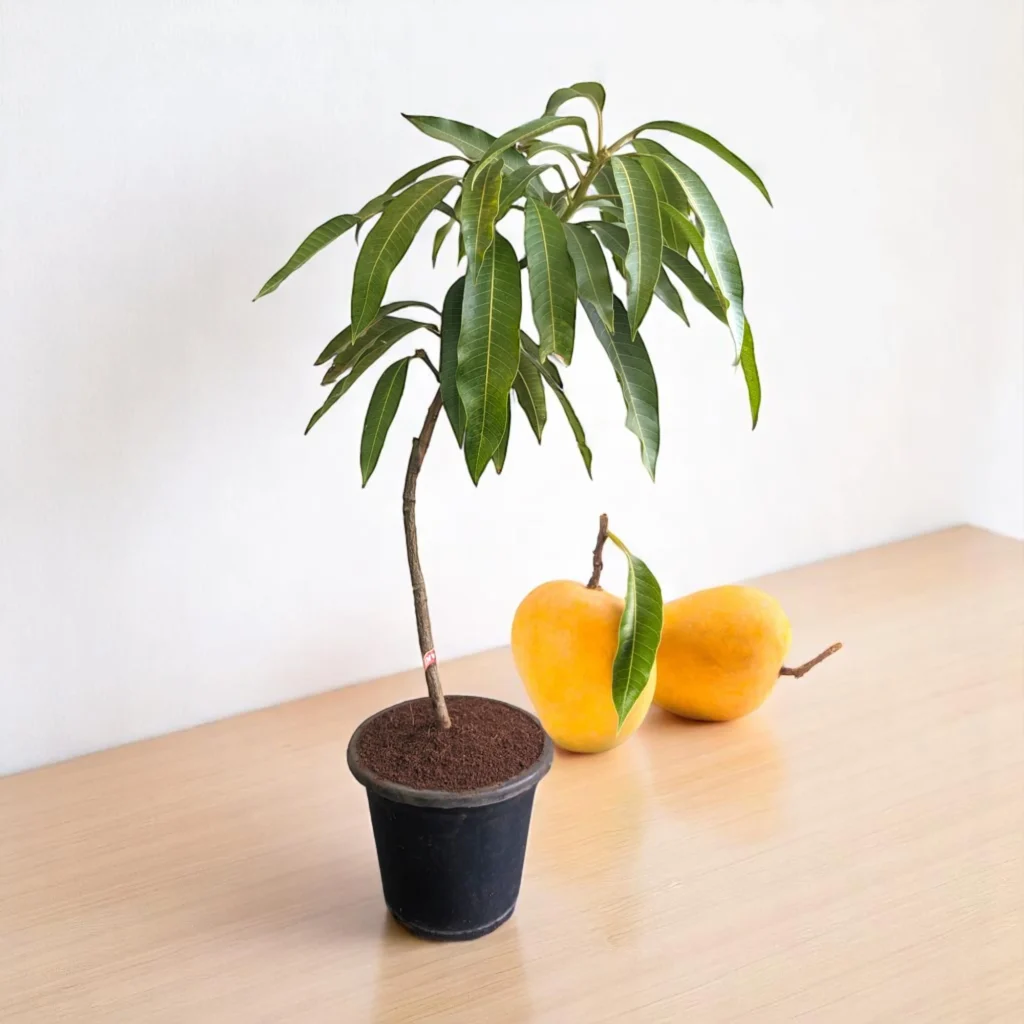
How to Water a Mango Tree Properly
Deep, Slow Watering
Apply water slowly and deeply to soak the root zone (12–24 inches deep). Avoid surface watering that encourages shallow root growth.
Water at the Drip Line
Water around the tree’s drip line — the area directly beneath the outer canopy where feeder roots absorb most moisture.
Morning Watering
Water early in the day to allow excess moisture to evaporate, minimizing fungal disease risks.
Use Mulch
A 2–4 inch layer of organic mulch helps retain soil moisture, regulate temperature, and reduce weed competition. Keep mulch 6 inches away from the trunk to avoid rot.
Seasonal Watering Chart for Mango Trees
| Season | New Trees (0–1 yr) | Young Trees (1–3 yrs) | Mature Trees (3+ yrs) |
|---|---|---|---|
| Spring | Every 3–5 days | Every 5–7 days | Every 10–14 days |
| Summer | Every 2–3 days | Every 5–7 days | Every 7–10 days (if dry) |
| Monsoon | Reduce if adequate rain | Reduce if adequate rain | Reduce or skip watering |
| Autumn | Every 5–7 days | Every 7–10 days | Every 10–14 days |
| Winter | Every 7–10 days | Every 10–14 days | Minimal, only if dry |
Note: Adjust based on soil type, climate, and tree health.
Signs of Overwatering and Underwatering
Overwatering Symptoms
- Yellowing leaves
- Soft, blackened roots (root rot)
- Fungal growth at the base
- Stagnant, overly damp soil
Solution:
Improve soil drainage, reduce watering frequency, and remove any standing water or mulch from the base.
Underwatering Symptoms
- Wilting leaves and drooping canopy
- Premature fruit drop
- Dry, cracked soil
- Leaf scorch and tip browning
Solution:
Water deeply and regularly during dry spells, especially during fruiting season.
Best Watering Practices for Mango Trees
Install a Drip Irrigation System
Efficiently delivers water to the root zone while conserving moisture and preventing fungal problems.
Avoid Frequent, Shallow Watering
Encourages shallow roots prone to drought stress. Deep, infrequent watering promotes stronger, deeper root systems.
Monitor Weather and Rainfall
Adjust watering schedule during rainy or extremely hot conditions.
Mulch Wisely
Retain soil moisture with organic mulch, but avoid piling it against the trunk.
Water Less in Winter
During the dormant phase, reduce watering to prevent over-saturation and root diseases.
Common Mistakes to Avoid
- Overwatering during monsoon or winter
- Neglecting newly planted trees in hot, dry weather
- Watering too close to the trunk
- Allowing soil to dry out completely during fruiting season
- Skipping mulch in arid regions
Conclusion
Mango trees thrive with deep, consistent watering during their establishment years and occasional, strategic watering once mature. While they’re remarkably drought-tolerant as they age, young mango trees need attentive care to develop a healthy, robust root system.
In summary:
- Water newly planted trees every 2–3 days initially, then reduce over time.
- Mature trees typically need water every 10–14 days during dry periods.
- Always adjust for climate, season, soil type, and rainfall.
- Deep, infrequent watering is better than frequent, shallow watering.
- Use mulch and drip irrigation to improve water retention and efficiency.
By tailoring your watering practices to your mango tree’s age, climate, and growth stage, you’ll enjoy healthy trees laden with juicy, sweet fruits for years to come.






Leave A Comment